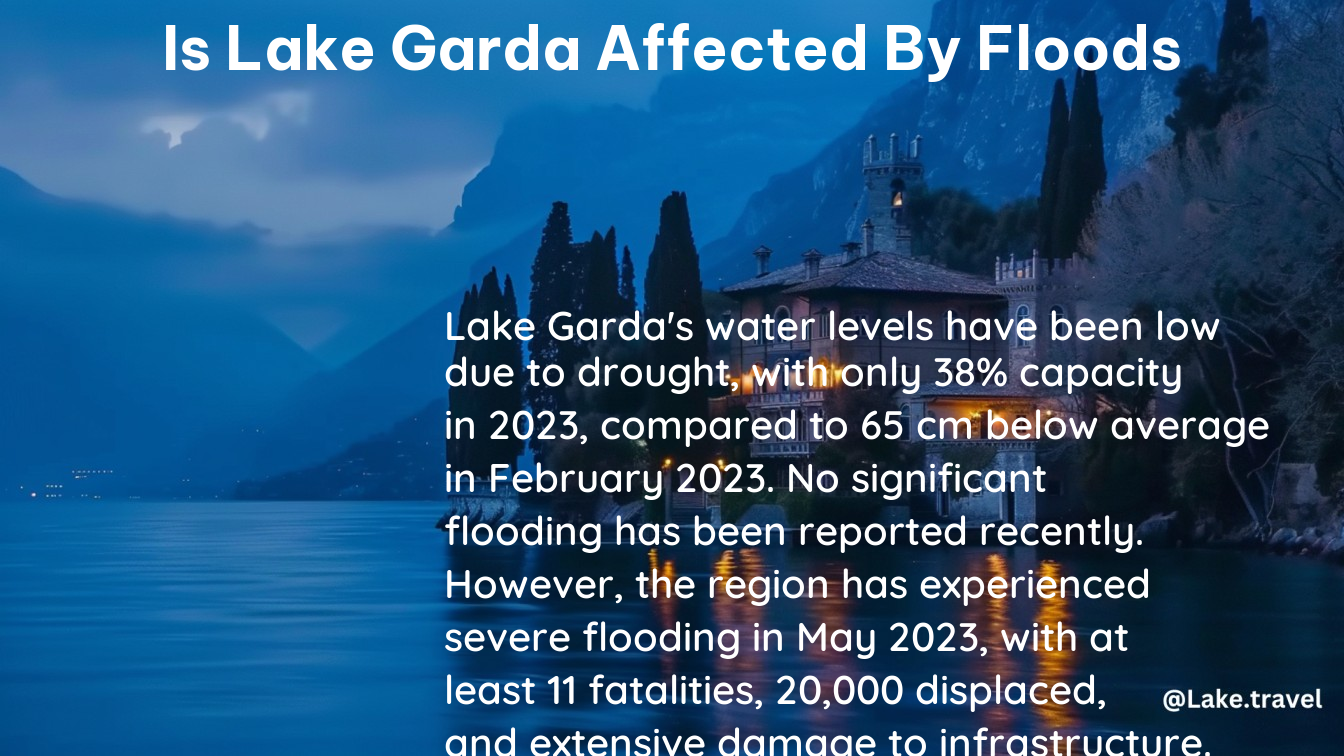Lake Garda: Facing the Challenges of Flooding
Lake Garda, the largest lake in Italy, has been grappling with the impacts of heavy rainfall and climate change, leading to frequent flooding events in recent years. The lake’s picturesque landscapes and popular tourist destinations have not been spared from the consequences of these natural disasters.
Understanding the Flooding Situation at Lake Garda

In July 2024, Lake Garda experienced a severe weather event that caused significant flooding in areas such as Lugana di Sirmione and Desenzano. The flooding was a result of heavy rainfall that led to the overflowing of the Ganfo canal, a crucial waterway in the region.
The flooding has caused significant inconvenience for residents, with images shared on social media showing streets submerged in rainwater and mud, and numerous garages flooded. Volunteers from the Basso Garda Civil Protection have intervened to contain the overflow and limit the damage, but the frequency of such events has raised concerns among residents about the need for a quick and effective solution.
Climate Change and Its Impact on Lake Garda
Climate change has also contributed to the flooding in Lake Garda. In 2023, the region experienced a prolonged drought, which reduced the land’s capacity to absorb water, worsening the floods. The intensity of water-related disasters around the world has increased over the last two decades as global temperatures have risen, according to recent research.
Infrastructure Vulnerabilities and Flood Mitigation Efforts
In recent years, there have been frequent episodes of flooding in areas surrounding Lake Garda, highlighting an infrastructure vulnerability that requires attention. For instance, in Desenzano, flooding has been reported in underpasses located on the border with Centenaro and towards San Martino d/B.
The local authorities and civil protection agencies have been working to address these infrastructure vulnerabilities and implement flood mitigation measures. However, the frequency and severity of the flooding events have posed significant challenges, and more comprehensive solutions are needed to protect the lake and its surrounding communities.
Impact on Tourism and Water Levels
Despite the flooding, travel to Lake Garda is not significantly affected. The ferries of the Navigarda network are running normally, and there are no restrictions on water sports or fountains in Riva del Garda. However, the water level in Lake Garda is currently 80 cm above its zero level, which is set at 64.027 meters above sea level. This is not far from the lowest level in decades, which was seen in the 1980s.
The fluctuating water levels can impact various recreational activities and the overall experience for visitors to Lake Garda. Boat tours, water sports, and access to certain beaches and lakefront areas may be affected, depending on the water level.
Conclusion
In conclusion, Lake Garda has been affected by floods due to heavy rainfall and climate change. While travel to the lake is not significantly affected, the frequent flooding highlights the need for effective solutions to address infrastructure vulnerabilities and the impacts of climate change. Local authorities and civil protection agencies must continue to work together to develop comprehensive strategies to mitigate the risks and protect the lake and its surrounding communities.
References:
– Lake Garda Travel Information
– Italy Flooding Incident
– Flooding Discussion on TripAdvisor
– Lake Garda Drought Concerns
– Flooding Incident Report
